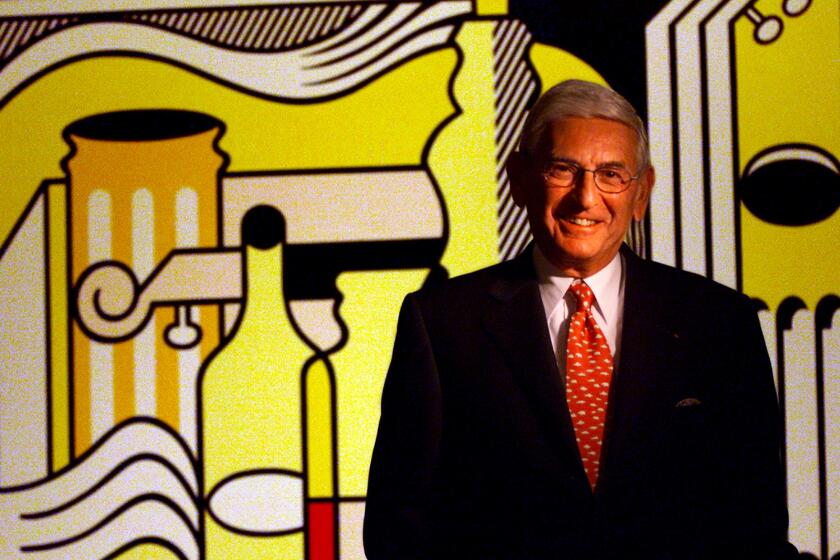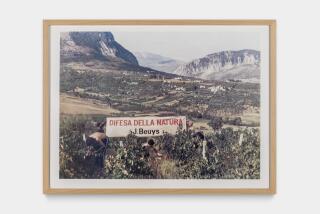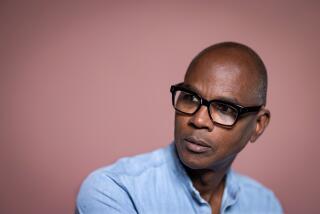‘He’s curmudgeonly generous’: How the art world remembers Eli Broad
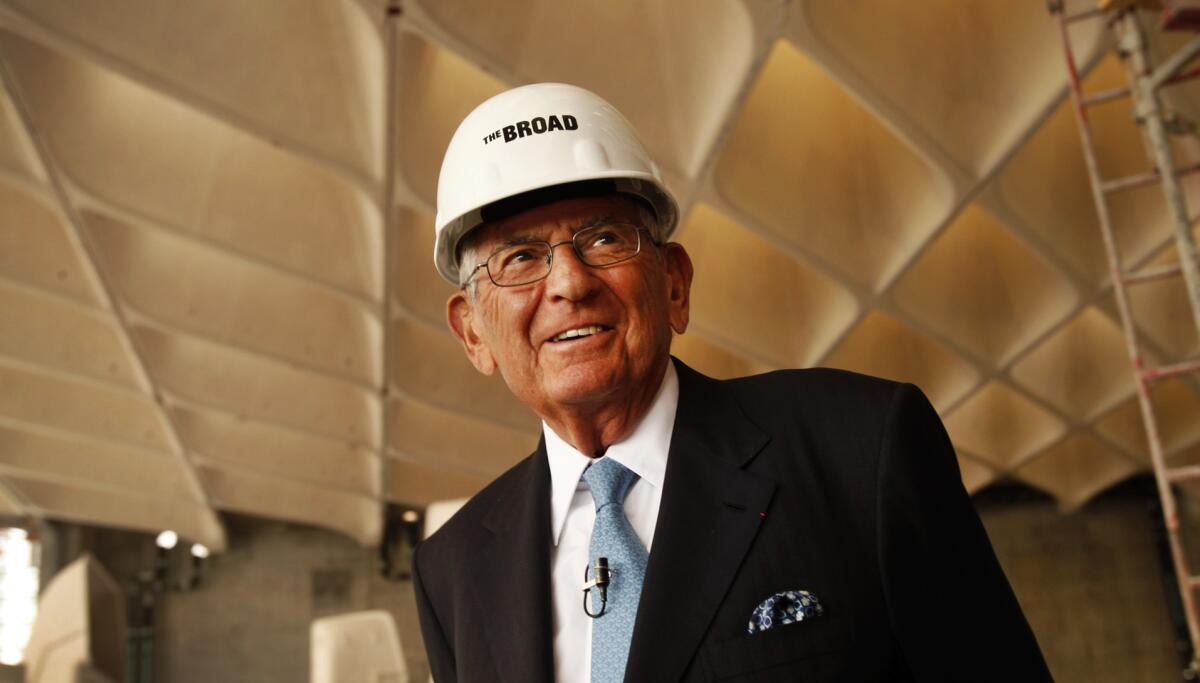
- Share via
As news spread Friday of the death of Eli Broad, The Times reached out for art-world remembrances of the philanthropic force who helped to put Walt Disney Concert Hall and the Broad museum downtown on the cultural map of Los Angeles.
Mark Bradford, artist:
“I was surprised how long he has been collecting, that and how much he and Edye [Broad’s wife] were a unit. He had a funny handshake. He would grab your hand and then shake and then pull you in. He’d hold you by the elbow. It was interesting, I never forgot that. It was like: OK, we’re gonna have some intimacy here.
“He was very early in buying my work. It meant that collectors who were shaping the L.A. landscape were including me in that history. The canoe went a little further down the river after that — like a rising tide lifts all boats — and he was part of that.”
Jeff Koons, artist:
“Eli really created such an opportunity for, in particular, my generation of artists. He and Edye started collecting early, but they focused on contemporary, and I think when they built the Broad, they really created a major museum in the United States for the generation of artists that I’m a part of. Eli was such an amazing philanthropist in the arts, but he also communicated to everyone that being of service to people — it’s not only arts but science and education and all the areas of philanthropy that he was involved with. He was just an amazing role model and friend, and somebody of a generation before us that we could look up to.”
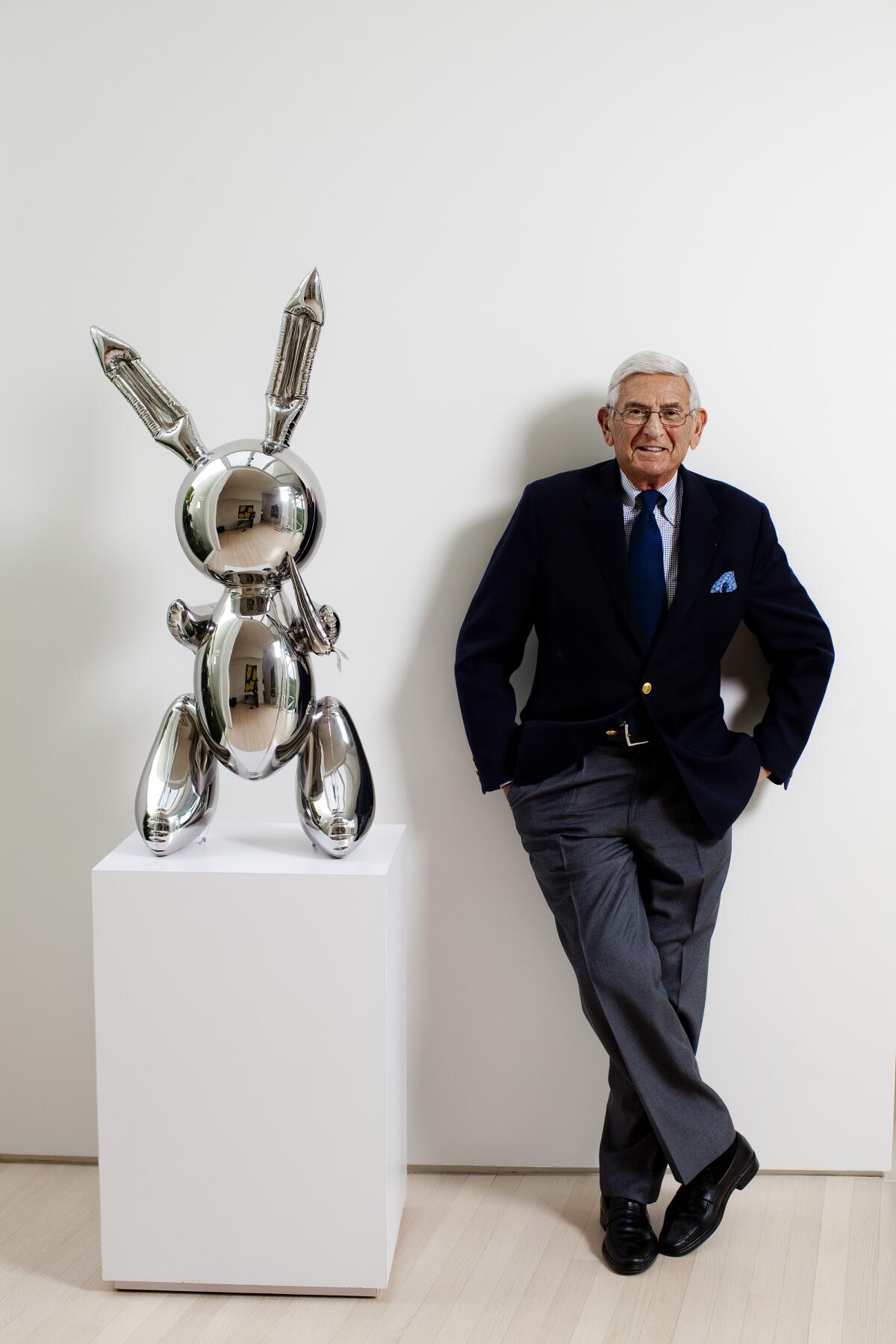
Joanne Heyler, founding director of the Broad museum, who worked with Broad in various capacities for more than 30 years:
“To me, I think a lot of people would say Eli’s toughness was one of his most distinguishing features as a philanthropist, particularly in the arts and particularly for the arts in Los Angeles. But for me, what stood out and continues to inspire me is that while it’s true he was tenacious and tough, he put those qualities and his drive towards public institutions, towards making the arts more available and vibrant in Los Angeles.
“The bedrock for him was being a civic leader. And what that means was not just writing checks but twisting the arms of his business peers to, for example, contribute to the effort to get Disney Hall built, to work his political connections that perhaps originated with his business career and to put those connections to essential and crucial use towards building up L.A. as an arts capital.
“It wasn’t just about writing checks and attending parties — sometimes he disliked both of those things — but once he set his mind on a goal, there was practically no limit to the time he was willing to personally spend in getting there.
LACMA, MOCA, the Hammer — museums had a complicated relationship with Eli Broad. Which partly explains why he ultimately built his own.
Liz Diller, lead architect of the Broad:
“Eli gave us the opportunity to do one of the best buildings we’ve ever made. He’s curmudgeonly generous. He’s a very idiosyncratic character because on the one hand, he’s immensely private, but at the same time he’s fully aware of how art can benefit society, and he’s just been a great advocate and supporter of arts and architecture.
“Before we won the competition [to design the Broad] it was down to several architects … and I was warned by some architects he has a past with not to get involved with a project with him. I felt it was a great challenge. I wanted to do the project that much more. And it turned out to be one of the greatest decisions. He was such a great client, extremely involved — sometimes too involved — but also trusting and very adventurous.
“My opinion about Los Angeles as a city was informed by British architectural critic Reyner Banham; he wrote about Los Angeles as a fantastical American city. And it was around the fact that L.A. could never really be a normal city; it was a car culture, and it was about the ecologies of Los Angeles. When I stepped into the project, I thought the building could be a great building next to Disney Hall. It was a great challenge to be there, but I never quite believed — as Eli did — in the urbanization of downtown L.A. And as I did the project, with a bit of an ironic beginning to it in terns of the urbanization, I became much more earnest as I went along. This was Eli’s vision. And in that way he had a vision much bigger than just a building. I became more of a believer.”
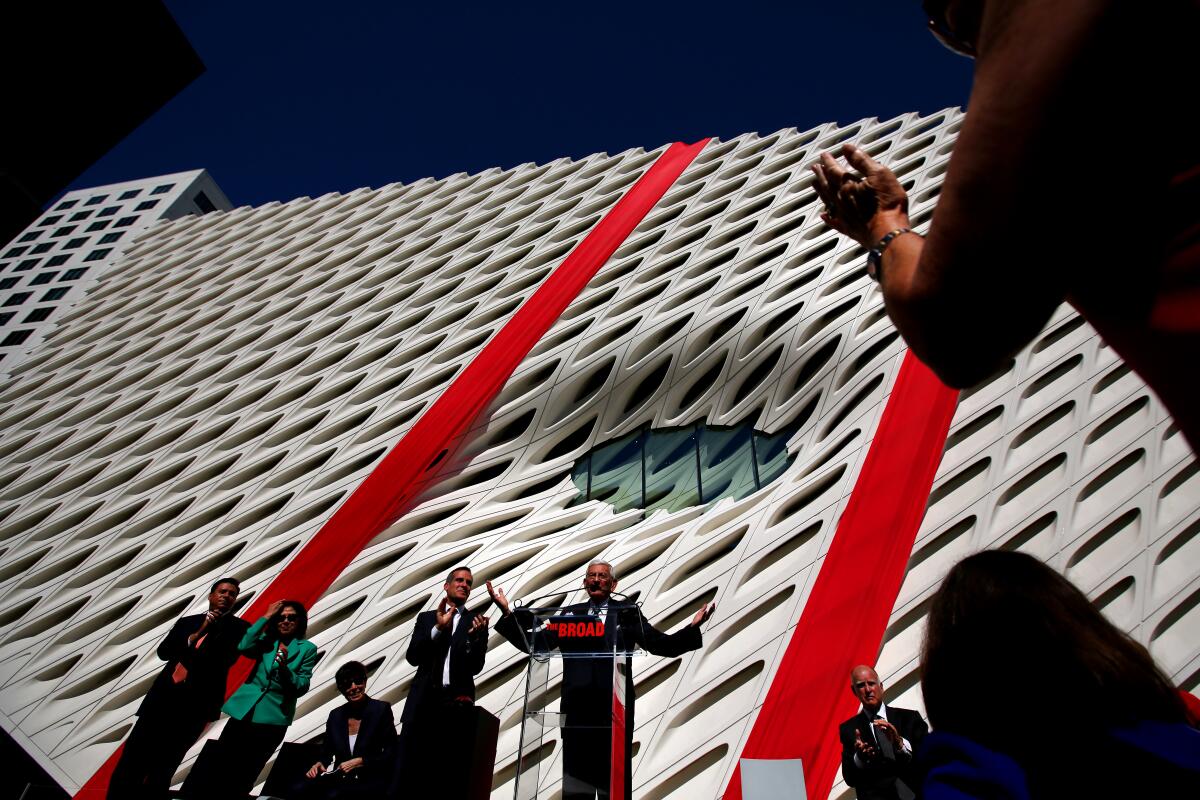
Shirin Neshat, artist:
“My exhibition at the Broad was the single most important exhibition of my career. The fact that I could share my work in Los Angeles, as well as with the Iranian community, was so important. But honestly, I was surprised he would give me a full exhibition like that, that he cared about my work and included me. [With] the museums in this country, basically it’s very difficult to get exhibitions for artists like myself. Because the theme of my work is not Western; it’s about non-Western cultures. And I’ve always felt a little like an outcast. Here I was a woman artist from Iran, and the fact that he took an interest in me and my work — his faith in my work made a statement. He wasn’t just after blue-chip white male artists. He took my work seriously. And it was one of the last exhibitions he did.”
Barbara Kruger, artist:
“Eli Broad was an ambitious and complex man who fell in love with an ambitiously complex city. And he gifted this object of his affections with a wealth of iconic projects that have helped make Los Angeles the cultural capital that it is. From museums to great public universities, his support of the arts and sciences, his focus on visual power, medical research and the urgent promises of science is felt everywhere in L.A., across California and the nation.”
Michael Govan, director of the Los Angeles County Museum of Art:
“Helping found MOCA, launching a new LACMA, and creating the Broad, Eli’s personal passion for contemporary art was central to his effort to build a better Los Angeles. His legacy will be felt for many generations.”
Photos: Eli Broad, philanthropist, art collector, builder, created part of the Los Angeles landscape
Eli Broad, philanthropist, art collector and builder, has died at 87.
More to Read
The biggest entertainment stories
Get our big stories about Hollywood, film, television, music, arts, culture and more right in your inbox as soon as they publish.
You may occasionally receive promotional content from the Los Angeles Times.
